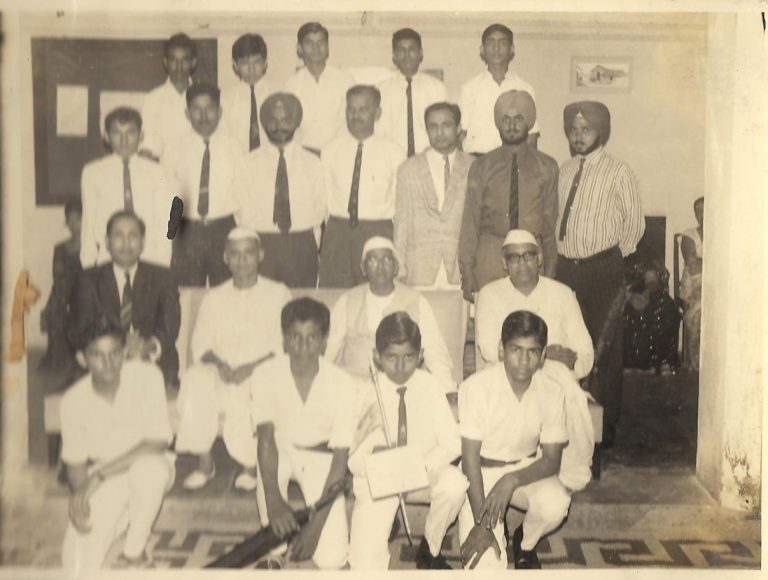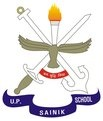Who We Are
A HISTORICAL PERSPECTIVE
It was on 15th July 1960, the seeds of U.P. Sainik School were sown in the rural setting of Sarojini Nagar, some 15 km away from the State Capital, Lucknow. As a special institution and the first of its kind, the idea of U.P. Sainik School was conceived by Dr. Sampurnanand, a veteran freedom fighter, an astute politician and a man of letters. He could see that the most populous State of the Union had a very thin representation in the officers cadre of the Armed forces. The UP Sainik School was set up to provide highly subsidized quality education to selected students with the help of military officers and to make it functional as a nursery and feeder institution for the N.D.A.

The school was established as a special institution under the General Administration Department of the Government of U.P. Lt Col HRH Daniel was its founding Principal. The Principal was assisted by Sri D N Pandey as Vice-Principal and Sri V G Horon as the Administrative Officer. The staff was drawn on deputation from the Education Department of U.P. The school admitted 50 cadets in class VII for its first term commencing from July, 1960 and the first cadet was YP Singh, School No. 1, now Lt Col, in the Army. With a band of 5 staff and 50 cadets U.P. Sainik School got a head start with promises for the people of the state.
The school started functioning in the buildings made available to it by Munshi Land Institute, an organization under the U.P. Post-War Services Reconstruction Fund Trust. It was planned to construct a new buildings as per requirement of the school at the existing site of the Scooter India. But subsequently during 1965, as the Munshi Land Institute was closing down, it was proposed to hand over the land and buildings of the Institute to Sainik School. Eventually the Munshi Land Institute was closed down and its land measuring some 280 acres and buildings thereat were transferred to U.P. Sainik Schools Society on sale in 1965. The buildings of Munshi Land Institute taken over by the School were not built to suit the requirement of a Sainik School. However, at the time they served the purpose temporarily. Looking in retrospect one can see that this arrangement militated against the U.P. Sainik School developing its own defined and properly laid out campus, buildings and facilities. Even after nearly 26 years of its existence it is still sheltered in those very buildings which are erratically dispersed and which have outlived their life.

The first batch of cadets from this institution joined NDA 30th Course commenced in July 1963. This event was celebrated in the school as the first Golden Night. And it augured well with the objective of the school. Thereafter there was a steady flow of wellgroomed cadets from this institution to the NDA. During the 26 years the school has sent as many as 299 cadets to the NDA. Nearly 100 more joined Armed Forces in the officer rank through other open channels.
Lt Col HRH Daniel its first Principal retired on 15 Sept 1964 and the reigns of the school passed on to the hands of another very dynamic officer Lt Col B K Das. With his arrival at the helm of the affairs the school was transferred from the General Administration Department of the Government of U.P. to the newly constituted U.P. Sainik School’s Society with the Chief Minister as Chairman of its Board of Governors. The school acquired a new character. All the deputationists were reverted to their parent departments. New staffs with public school background were recruited. The posts of the Vice-Principal and the Administrative Officer were abolished and instead posts of headmaster and Registrar were created. Major K L Verma being its first Headmaster and Major HS Kalakoti the first Registrar.
The school admitted students twice a year in the months of March and October. Biennial entry was changed into one point annual entry from 1972. The strength of the school steadily rose. By 1964 it reached 200. In 1967 the school had a sanctioned strength of 250. In 1967 a Holding House under the name of ‘Shastri House’ was started. The new entrants to the School were housed in Shastri House for six months. Thereafter they would join their senior comrades in their respective Houses (viz Sampurnanand, Tandon, Kidwai and Nehru).
The year 1969 saw the teen aged cadets of this school scale the 19,687 feet high peak of Deo Tibba. The team was led by Cdt. S K Mathur under the guidance of Maj PPS Cheema. Among many cadets having made noteworthy contribution in the outdoor activities, name of Cadet S K Chand comes to the fore. He represented Junior Basket Ball National team against Sri Lanka. Cadet Chand Joined the Army in the ranks and got commissioned in 1982. Year by year the school gathered momentum. In 1979 the sanctioned strength of the School was raised to 300. The School got stabilised on this strength. During the tenure of Lt Col B K Das followed by Lt col Randhir Singh and Lt Col DS Misra as the Principals, the School made steady progress. Although the facitlities were not augmented the U.P. Sainik School kept up its contribution to NDA by maintaining high standard of training. Plan for the new complex of the School were finalized in 1981 under the dynamic direction of Wg Cdr K S Tripathi who had taken over as Principal in 1977. The foundation of a New Kidwai House was laid by Sri Sripati Misra the then Chief Minister U.P. on 26 November, 1982 and the major part of work completed in 1984. In July 1984 the Kidwaians moved to the new house.
In October 1985 Sri G S Chaudhri was appointed principal of the school following sudden demise of Wg Cdr K S Tripathi.
Years spanning 1982-1985 had been a very turbulent period in the history of the school. The staff of the School were in a state of unrest. They were temporary with no retiring benefits. With the change in administration and the Government of U.P. accepting the necessity of retirement benefits to the staff in principle things in the school looked up.
On 26 June 1986 Wg Cdr SS Dubey a regular officer of the IAF took over as Principal. Several changes in School routine and the House System were introduced in July 1986. The academics and co-curricular activities in the school were enlarged.
On 10 July, 1986 government orders extending pensionary and other retirement benefits to the school staff with effect from 1st April, 1986 were received ending the 25-year long wait. A measure of the school’s distinctiveness can also be had from the long list of very distinquised visitors who range from eminent statesmen to soldiers and men of letters. A few among them were Sri Gopala Reddy, Sri Biswanath Das, Sri Akbar Ali Khan, Sri GD Tapase, (Governors U.P.) Dr. Sampurnanand, Smt Sucheta Kripalani, Ch. Charan Singh, Sri Sripati Misra, Sri Bir Bahadur Singh (Chief Minister of U.P.), Sri V K Krishna Menon. Sri LN Mishra (Central Ministers), General PP Kumaramangalam, Admiral AK Chatterjee, Air Chief Marshal Arjun singh (the Chiefs of the Army, Navy and Air Forces) Sri Sunil Dutt, Sri Ramesh Mehta, Sri and Smt. Panigrahi, (films and arts) & Sri PB Gajendra Gadkar, Chief Justice of India.
December 25, 1986 has a very special significance in the history of the School. The School celebrated its Silver Jubilee with great fanfare. Honourable Sri Bir Bahadur Singh, the Chief Minister of U.P. was the Chief Guest at the function. It was a moment of great pride for theschool when the Chief Guest’s Helicopter piloted by Sqn Ldr RN Sen Gupta and Sqn Ldr Sashank Sekhar two ex-cadets of this school, landed on the school parade ground. A befitting grand salute to the function was the tally of the 29 cadets on the select list for the NDA during 1986(two courses combined). And the School came right on top among the 20 Sainik Schools in the country by sending the largest number of cadets to 77 NDA course. An on the spot announcement of a grant of Rs. 50 Lakh for the betterment of training and living facilities in the school by the honourable Chief Minister at the Silver Jubilee function was perhaps a recognition of the significant services this special institution has been doing in training cadets for entry to NDA. The school marches on and with this flow its legend of success story. “We have promises to keep and miles to go………………”
AIM
The main aim of the School is to prepare the Cadets academically, physically and mentally for entry into the Commissioned ranks of the Defence Services through the National Defence Academy. To achieve this, the School provides comprehensive education:- 1. To bring each cadet to an educational standard which will enable him to complete successfully in the open competition for admission to the National Defence Academy. 2. To train each Cadet in a manner, which will instill in him qualities of self reliance and confidence and enable him to derive full benefit from the courses of instruction at the National Defence Academy. 3. To render Cadets physically fit to take their place at the NDA and later to face with courage and endurance the hardships inseparable from life in the Armed forces. 4. To impart training to all Cadets so that in consonance with the National Spirit they could conduct themselves with confidence in any society,and 5. To infuse in all Cadets a sense of loyalty, patriotism, individual and corporate responsibility for leading a purposeful life as honest and useful citizens of India.
